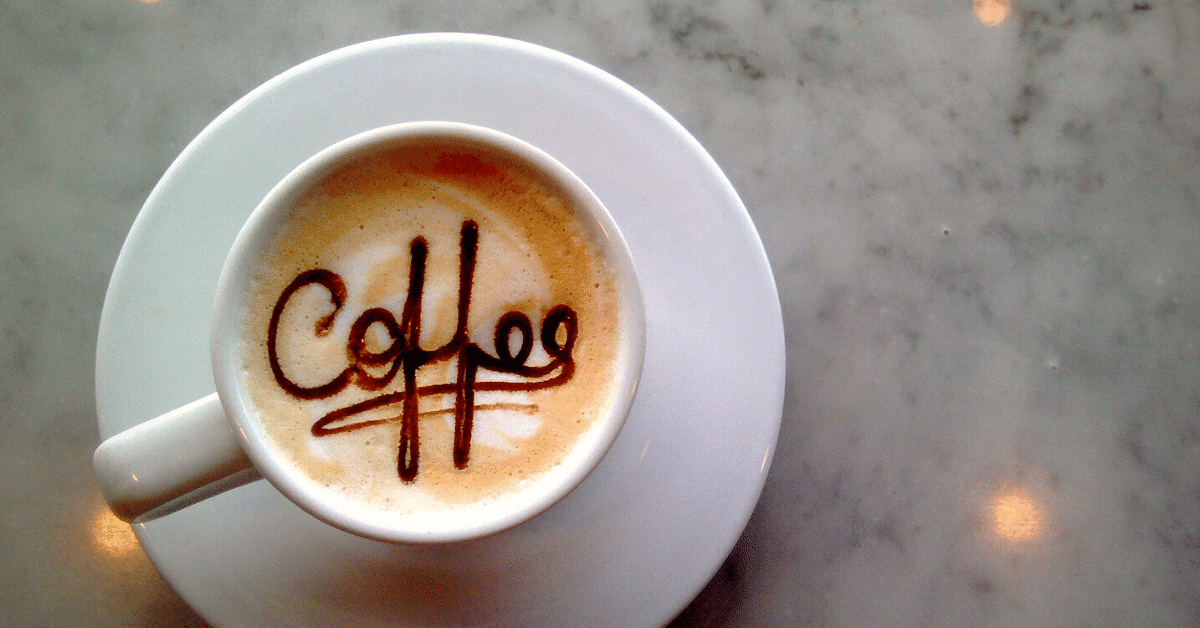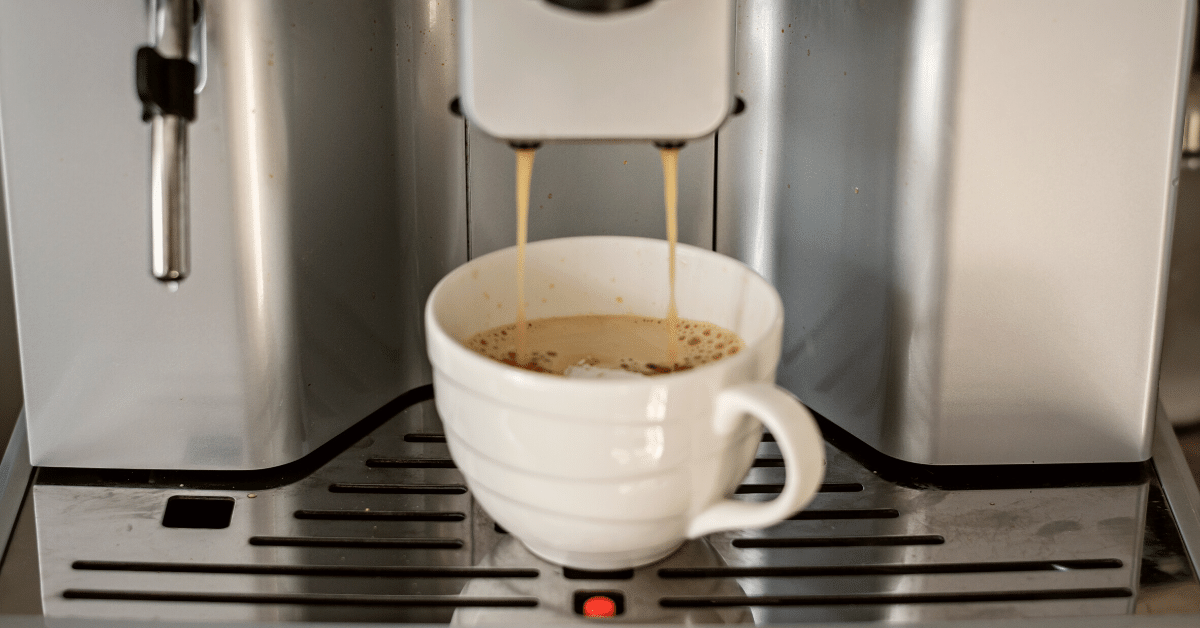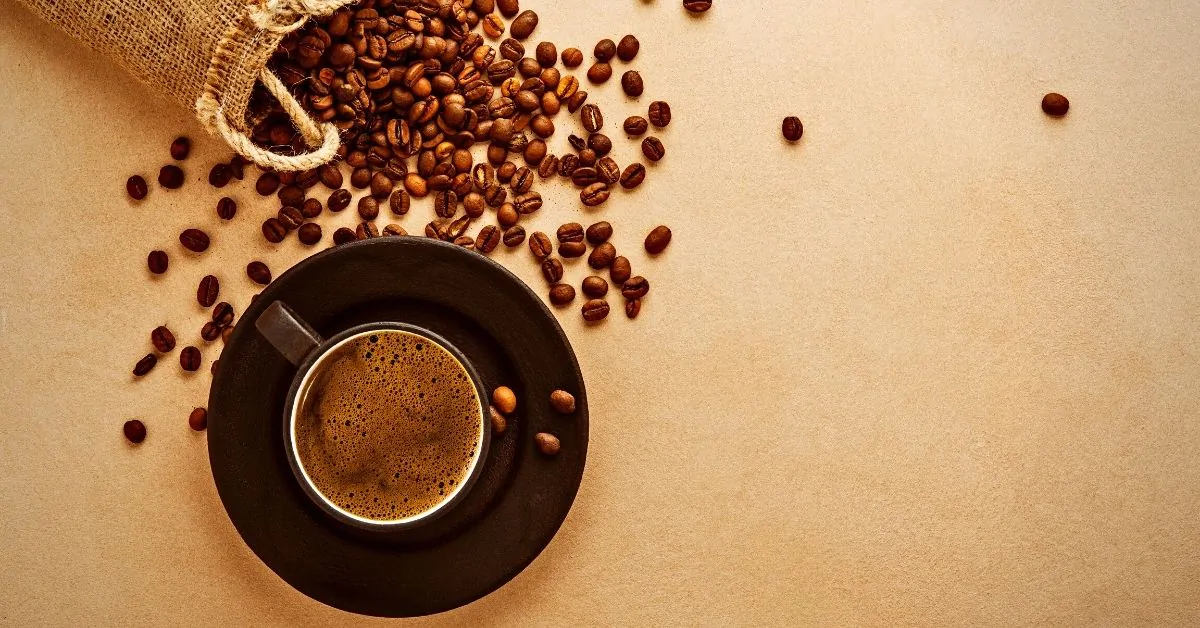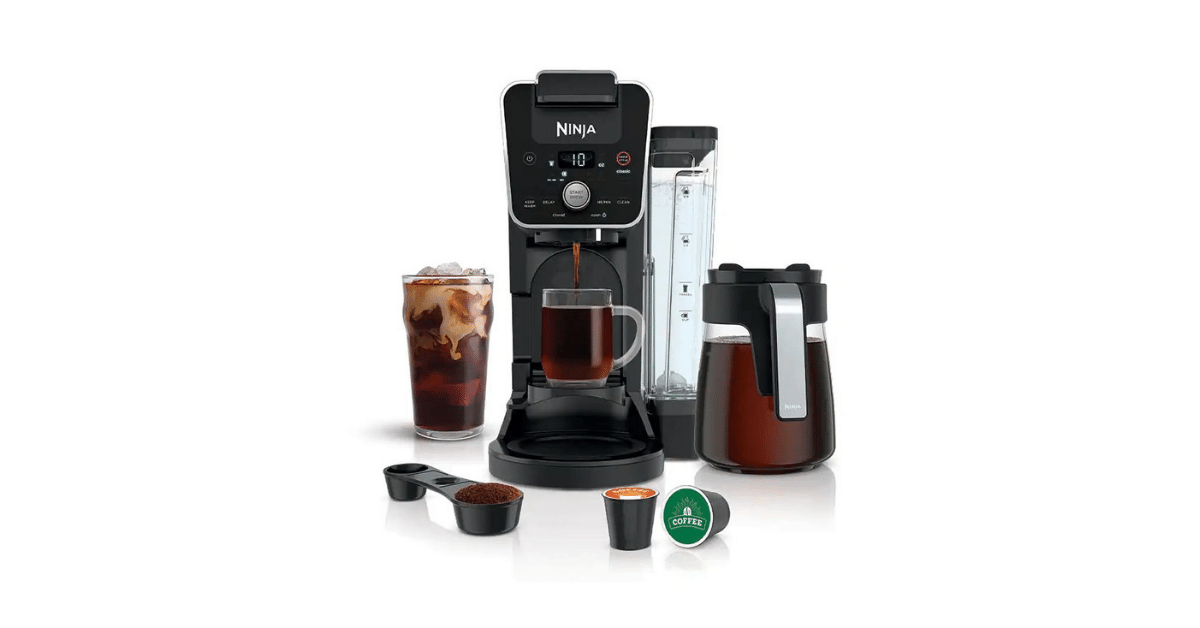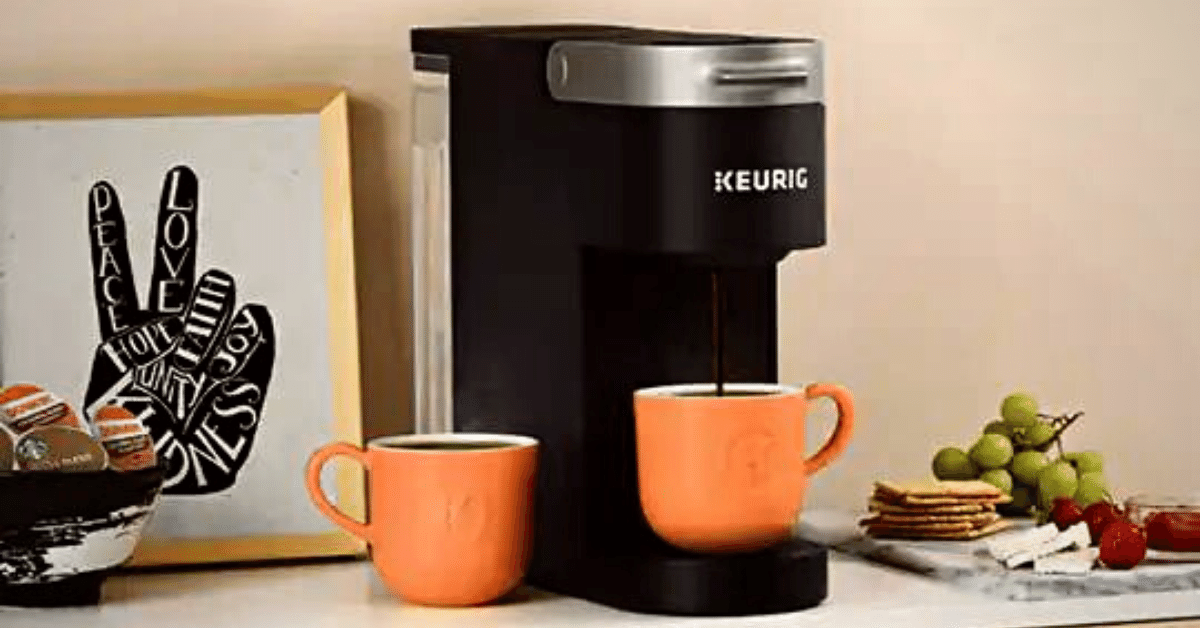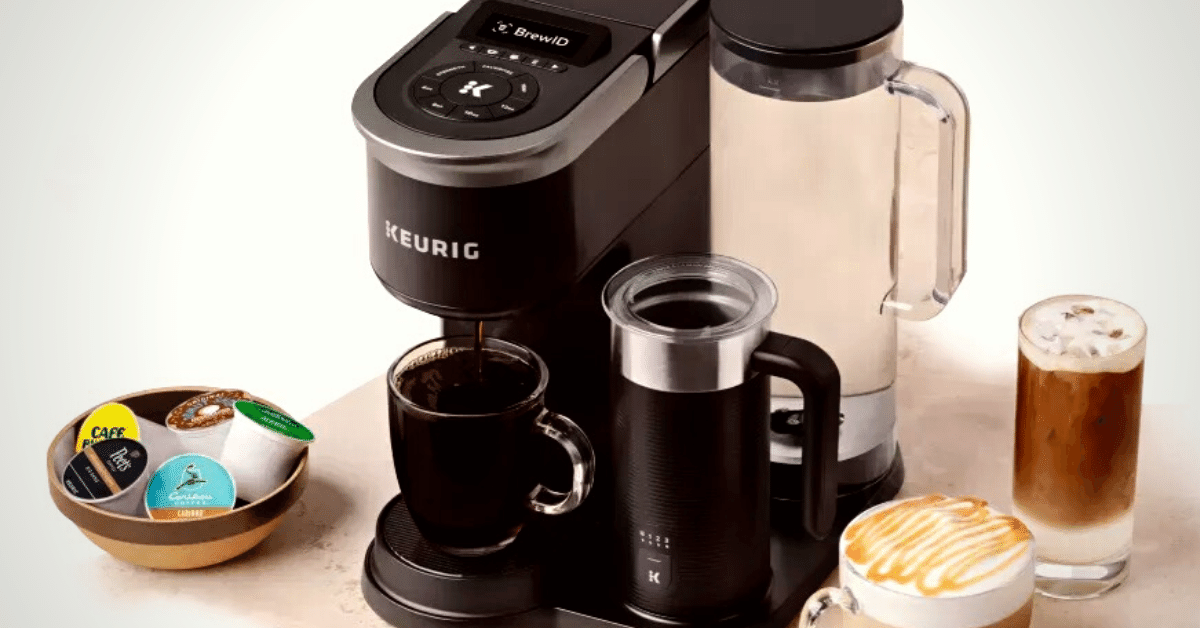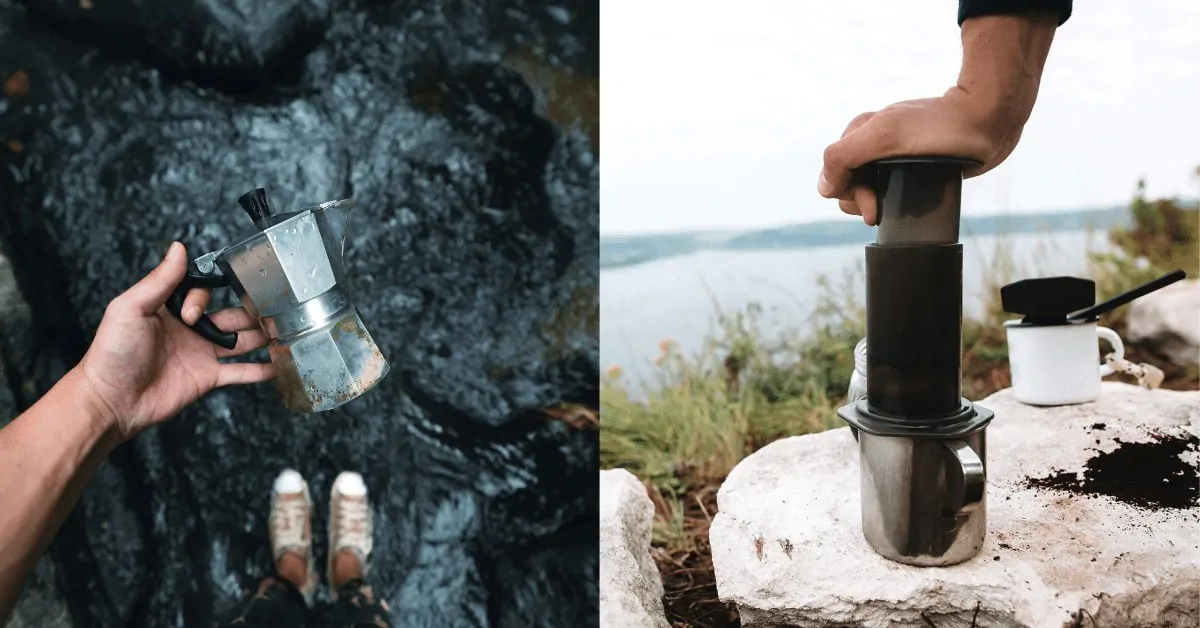Want to learn all the important coffee terms? Check out our ultimate glossary and learn how to talk like a professional barista.
Every niche has its own jargon that is confusing for a lot of people.
Coffee is no exception. We have plenty of words that are confusing or hard to understand.
It took me a few years of working in the coffee industry to feel like I had a handle on all the terms.
I created this coffee terms glossary, so you have a resource to reference. I know the world of coffee can be intimidating, so I hope this helps!
Without too much preamble, let’s get to the glossary.
The Ultimate Coffee Terms Glossary
For easier reference and use, I separated the terms into subcategories.
Let’s get started!
Tasting Notes

- Acidity – Or “Brightness” is coffee that has a potent or punchy flavor, like pink lemonade.
- Aroma – The smell and impression of fresh coffee.
- Balance – Refers to the combination of the three pillars of coffee taste: Sweet, Sour, and Bitter. A balanced coffee has all three in good proportion.
- Bitter – A flavor note used to describe especially dark, flat, or intense coffees without any sweetness.
- Body – A flavor descriptor. Usually, it refers to the roundness or fullness of the coffee.
- Bold – A coffee with a strong and intense coffee flavor.
- Bright – A tasting note that describes a coffee with high acidity, a coffee that sometimes has sour or especially sweet notes.
- Complexity – Used in coffee tasting. Refers to how many flavors and dimensions the taster experiences.
- Cupping – A dedicated coffee-tasting session.
- Earthy – A coffee-tasting note that refers to deep, rich, and often dry flavors in a coffee.
- Finish – Refers to the aftertaste of a coffee during cupping.
- Flavor – Refers to the taste profile and characteristics of a coffee.
- Fragrance – The smell and feel of freshly brewed coffee.
- Mild – A tasting note that refers to the boldness of the coffee. A mild coffee has a lower body.
- Q Grading – The process of professional coffee tasters grading coffee to give a “Q” score.
- Richness – This refers to the body of the coffee. The richness is typically seen as how rounded and bold a coffee is or how much it just tastes like ‘coffee.’
- Sour – A tasting note used to describe especially acidic coffee. It can sometimes taste like lemons or limes.
- Tasting Notes – Refers to what someone tastes in a coffee during cupping. It can vary from person to person and coffee to coffee. Tasting notes can often be found on the front of bags of coffee.
Types Of Drinks
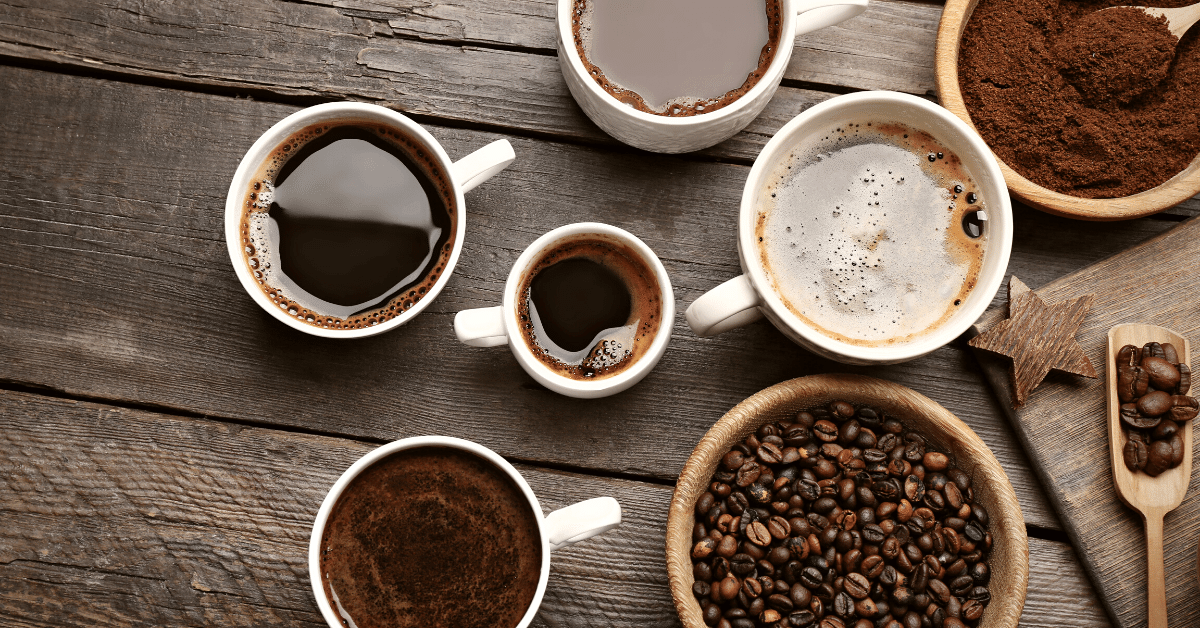
- Americano – A diluted coffee drink made by adding hot water to espresso.
- Affogato – A coffee dessert made by adding a scoop of vanilla ice cream to brewed coffee.
- Breve – Using half-and-half instead of whole milk to create a specialty drink.
- Cafe Au Lait – A coffee drink typically made with half the brewed coffee and half the frothed milk.
- Caffeine – A chemical found in coffee that stimulates your body and mind. The reason many people drink coffee is.
- Cappuccino – An espresso drink traditionally made with a single espresso and frothed milk in a 1:2 espresso-to-milk ratio.
- Chicory – A plant traditionally added to coffee from New Orleans. Meant to add a smoky flavor.
- Cold Brew – A type of coffee brewing where cold water brews coffee for a long time instead of hot water for a short time.
- Con Panna – An espresso usually topped with a dollop of whipped cream.
- Cortado – An espresso drink traditionally made with a 1:1 ratio of espresso to milk.
- Crema – The light brown, sometimes foamy layer that forms at the top of a freshly pulled espresso shot.
- Cubano – A type of concentrated espresso drink made with raw sugar and traditionally shared among a group.
- Decaffeinated – A coffee whose caffeine has been taken out.
- Doppio – A double shot of espresso.
- Dry Cappuccino – Refers to a cappuccino with extra foam instead of frothed milk.
- Espresso – A concentrated coffee that is made by forcing hot water through finely ground coffee with built-up pressure.
- Espresso Macchiato – An espresso with a spoonful of steamed milk added to the top.
- Flavored Espresso Drink – Espresso that has been flavored with other things, like vanilla or hazelnut.
- Flat White – A traditional Australian espresso drink with flat steamed milk.
- Frothed Milk – Forcing hot steam through milk to create micro-foam and texture for making espresso drinks and latte art.
- Iced Coffee – Hot brewed coffee that is served by pouring it over a cup filled with ice.
- Latte – An espresso drink with a traditional milk-to-espresso ratio of 1:3.
- London Fog – A tea-based drink with steamed milk. Traditionally made with either lavender or vanilla.
- Lungo – An espresso shot that is pulled longer than normal to create a bigger and bolder coffee.
- Macchiato – A Starbucks drink that refers to adding espresso after steamed milk. A traditional macchiato is an espresso shot with a pinch of milk foam.
- Mocha – A latte with chocolate added to the espresso before being combined with steamed milk.
- Mochaccino – A cappuccino with chocolate added to the espresso before being combined with steamed milk.
- One Percent – Milk is sometimes used in coffee drinks that have a fat content of one percent.
- Red Eye – This is a coffee drink that is made by adding espresso to brewed coffee.
- Ristretto – An espresso shot that is pulled shorter than a regular espresso. The goal is to make an espresso that is sweeter and less bitter than a regular espresso.
- Short – A smaller and more concentrated amount of brewed coffee. Sometimes used interchangeably with “ristretto.”
- Short Shot – This is typically used when describing a “ristretto” shot. Sometimes “Shot” is left out entirely.
- Straight Shot – Ordering a “straight shot” will get you a shot of espresso without any additions.
- Wet Cappuccino – A cappuccino that has less foam and more milk than a traditional cappuccino.
Types Of Brewers And Other Apparatuses
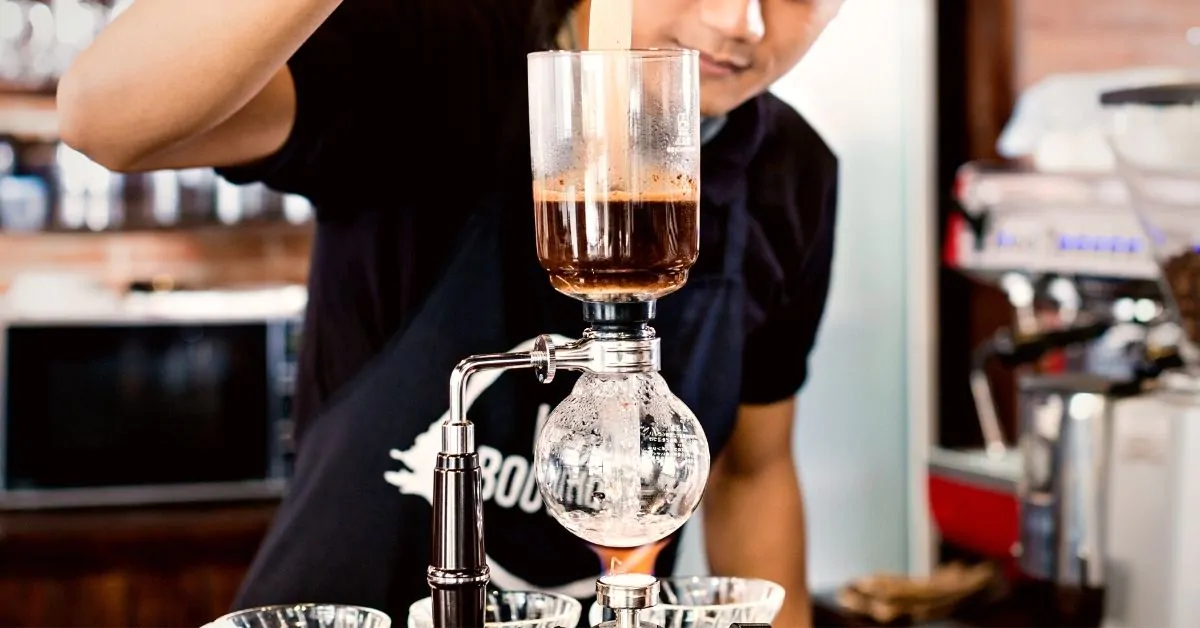
- AeroPress – An immersion coffee brewer with a cylindrical design and plunger that has become one of the most popular coffee brewers in the world.
- Blade Grinder – A type of grinder that uses blades to chop coffee beans into small, usable chunks for brewing.
- Burrs – Pieces inside a grinder that crushes and mash coffee beans into small, usable chunks for brewing.
- Burr Grinder – A grinder that uses burrs instead of blades.
- Chemex – A pour-over coffee brewer that looks like an hourglass and has one big opening and takes special square filters.
- French Press – A brewing apparatus with a carafe, filter, and plunger where coffee grounds steep in hot water.
- Grinder – An appliance that crushes or mashes roasted coffee beans for use in brewing.
- Percolator – A type of coffee brewer that uses boiling water to force the water up through coffee grounds and into the carafe at the top.
- Pour Over – A coffee brewing method where coffee grounds are added to a cone-shaped brewer and water is poured over the ground coffee beans. Drip coffee is made with automatic pour over machines.
- V60 – A coffee brewer that is shaped like a cone and is placed on top of a mug or other carafe. It is a pour-over and uses special filters.
All Things Bean
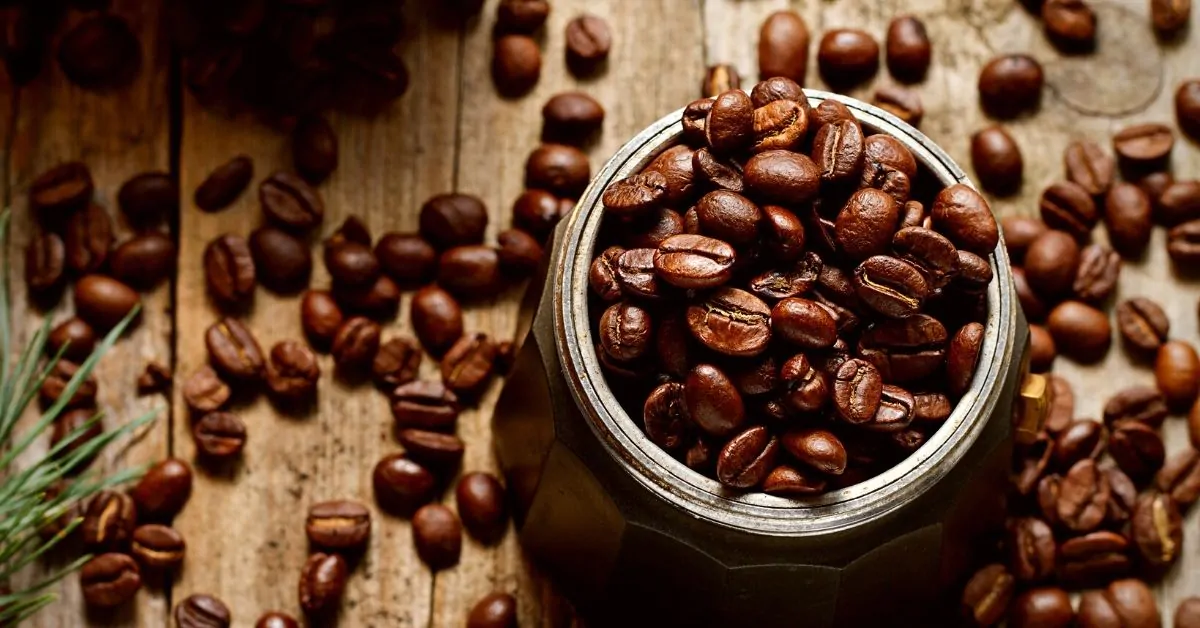
- Arabica – One of the two main types of coffee beans grown and used around the world. Arabica coffee is considered more tasty and milder than Robusta coffee.
- Bean – Actually a seed of a coffee plant, but the base for all coffee brews that come from the coffee cherry; comes in a wide range of colors and a distinct half-circle shape.
- Blend – Any coffee beans that have been mixed with other coffee beans from other farms, origins, or crops.
- Bourbon – A common type of coffee bean varietal. Pronounced with a long “O’’ sound.
- Chaff – The inner parchment-like piece of a coffee bean that tends to fall off during grinding.
- Cherry – The name was given to the ripe coffee fruit before it gets harvested and processed.
- Dark Roast – A coffee roasted for a long time at high heat to give the coffee a bolder and richer flavor.
- Defects – Refers to imperfections in coffee beans that make them undesirable for brewing. Sometimes defects can cause an entire brew to go bad.
- Degassing – This is the process of letting a fresh bag of coffee ‘breathe’ to release built-up CO2.
- Green Coffee Beans – These are coffee beans that have not yet been roasted. They look beige or sometimes green.
- Natural Processed – Refers to coffee beans that are allowed to dry while still in the coffee cherry before being processed. It creates a richer and more rounded-tasting coffee.
- Peaberry – A natural mutation in coffee cherries where the coffee cherry produces one big bean instead of two smaller ones. It is typically more flavorful and richer.
- Roast – This is the process of ‘cooking’ coffee beans so that they develop good flavors that we bring out when we brew.
- Robusta – This is the other most common type of coffee bean used and brewed around the world. It is seen as less tasty and less desirable than Arabica beans. Robusta beans have an earthier and heartier flavor.
- Second Crack – A point during the coffee roasting process when the beans expand for a second time and moisture is released. This stage is usually for the darkest roasts.
- Varietal – The collective name for all types of coffee beans grown and found around the world. Each type of bean is its own “varietal.”
- Washed Processed – Refers to coffee beans that are separated from the coffee cherry before they are allowed to dry. It produces a crisp and clean cup of coffee.
Coffee Shop Words
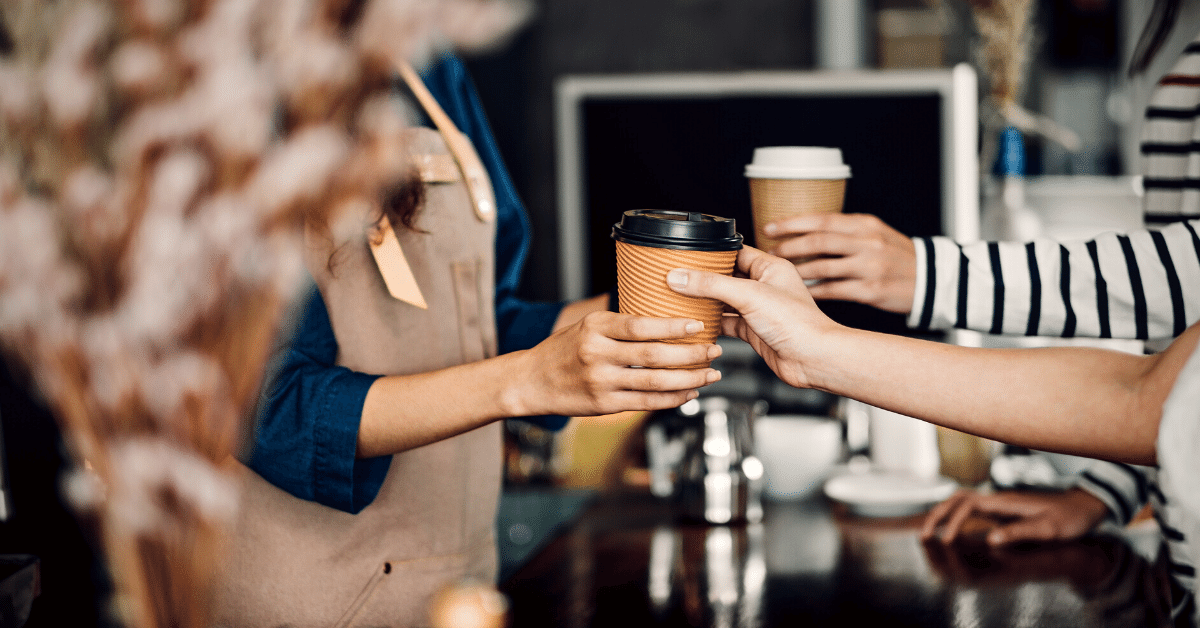
- Barista – The name was given to someone who makes coffee, often employed at a coffee shop.
- Batch – Multiple servings of coffee brewed together.
- Bloom – A part of the brewing process where water is stopped, and the coffee grounds are allowed to soak briefly before the rest of the water is poured.
- Demitasse – A small cup used by baristas for serving smaller drinks like espresso or cortado.
- Draw – The part of a coffee brew where the water finishes running through the beans or ‘draws’ to the cup.
- Drip – A coffee brewing method where water is slowly and consistently “dripped” onto coffee grounds. A drip coffee maker uses this method.
- Espresso Pitcher – The container used by baristas to steam and froth milk for milk-based espresso drinks.
- Fair Trade – A certification process for coffee growers and roasters that ensures no part of the supply chain is exploited.
- First Crack – A point during the roasting process when the beans begin to swell and make a sound similar to popcorn in a microwave.
- Flat – A milk-based espresso drink without foam.
- Grande – A Starbucks size that is 16 oz.
- Group – The brewing apparatus found in espresso machines.
- Group Head – The part of the Group that attaches to the portafilter. Where the water leaves the Group and comes into contact with the coffee.
- Immersion – A type of coffee brewing that lets coffee grounds sit in hot water for a long time instead of hot water running through or over the grounds. (e.g. French Press or AeroPress)
- Java – Another word for coffee that refers to an island in Indonesia where Dutch tradesmen started growing coffee in the 1600s.
- Knockbox – The box used by baristas for discarding used coffee grounds after pulling a shot.
- Latte Art – The picture made by a barista on the top of a milk-based espresso drink by making the milk “float” on top of the espresso.
- Micro-Lot – A small batch of coffee that comes from one crop on one farm. Micro-Lots are desirable because they are so unique.
- Organic – A certification for coffee that ensures the growing, harvesting, and roasting processes are held to high standards.
- Packing – This is the action taken by a barista when they add coffee grounds to a portafilter when preparing to pull a shot.
- Portafilter – The handle a barista uses that has a flat cup at the front where they add coffee grounds to use to make espresso.
- Puck – The compacted disc of coffee grounds that are in the portafilter while brewing espresso.
- Pull – Generally used to refer to the act of making espresso. It comes from the old espresso machines that used a lever a barista had to ‘pull’ to make coffee.
- Ratio – Typically refers to the number of coffee grounds used versus the amount of water used. The “Golden Ratio” is about 16:1, or 16 grams of water for every gram of coffee.
- Single Origin – Refers to coffee that comes from one place of origin. Typically it means one crop from one farm. Sometimes it refers to a bag of coffee that comes from one single country.
- Skinny – A milk-based espresso drink made with skim milk instead of fattened milk.
- Specialty Coffee – Generally used to refer to coffee shops that take pride in their single brews.
- Steam Wand – The part of the espresso machine that produces hot steam the barista uses to steam and froth milk.
- Tamping – When a barista uses a special tool to compress the coffee grounds in a portafilter before pulling a shot.
- Terroir – The geographic and geological factors of a coffee’s place of origin that shape the final tasting notes of the coffee. E.g. altitude, soil, shade, etc.
- With Legs – Refers to any coffee made-to-go instead of in a cup to drink at a cafe.
My Final Thoughts
So there you have it.
A glossary of as many coffee terms as I could come up with.
This isn’t quite an exhaustive list, but it does have a lot of the words I get asked about regularly.
Wondering how many different words we have for coffee? Check out our article on the top slang terms for coffee!

